Cooking with a cast iron skillet on a glass top stove is a fast and tasty method. However, it is important to be cautious as it may harm the surface of your stove. It is important to learn how to prevent cast iron pans from damaging your glass top stove. With the right tips and tricks, you’ll be able to use these two pieces of kitchen equipment together without damaging either one.
How To Protect Glass Top Stove From Cast Iron
Investing in glass-top stove liners is one easy way to protect your glass top stove when using a cast iron skillet. These thin, non-stick sheets are designed to fit on the surface of your stove and provide an extra layer of protection between the two materials. Using liners can make clean-up easier and prevent food or grease from burning onto your stove’s surface.
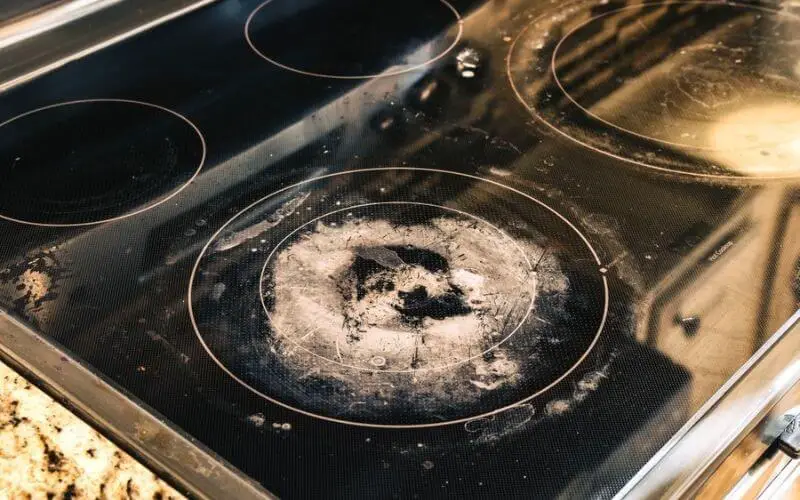
Keep your glass top stove safe from scratches and damage caused by cast iron skillets by using pot holders or potholders to transfer them. This is an easy and effective way to prevent the pan’s bottom from coming into contact with the stove surface. Protect your stove and prolong its lifespan with this simple tip.
Can You Use Cast Iron On a Glass Top Stove?
It is possible to use cast iron on a glass top stove, but you should take some precautions. First, make sure the surface of your cookware is dry and clean before using it. If there are any particles or debris from seasoning or other deposits, they could scratch the glass top. Second, use low to medium heat when cooking with cast iron so the glass does not crack.
Lastly, never slide cast iron on the surface of a glass top stove; instead, lift it carefully to prevent scratching. By keeping these precautions in mind, you can safely experience the advantages of cooking with cast iron on your glass top stove.
Additionally, consider investing in a mat or liner for extra protection against scratches. You can use stove liners that are made specifically to protect glass top stoves from scratches and heat damage, especially when cooking with heavy cookware like cast iron.
To keep your glass top stove in top shape, quickly wipe away spills and splatters with a soft cloth.
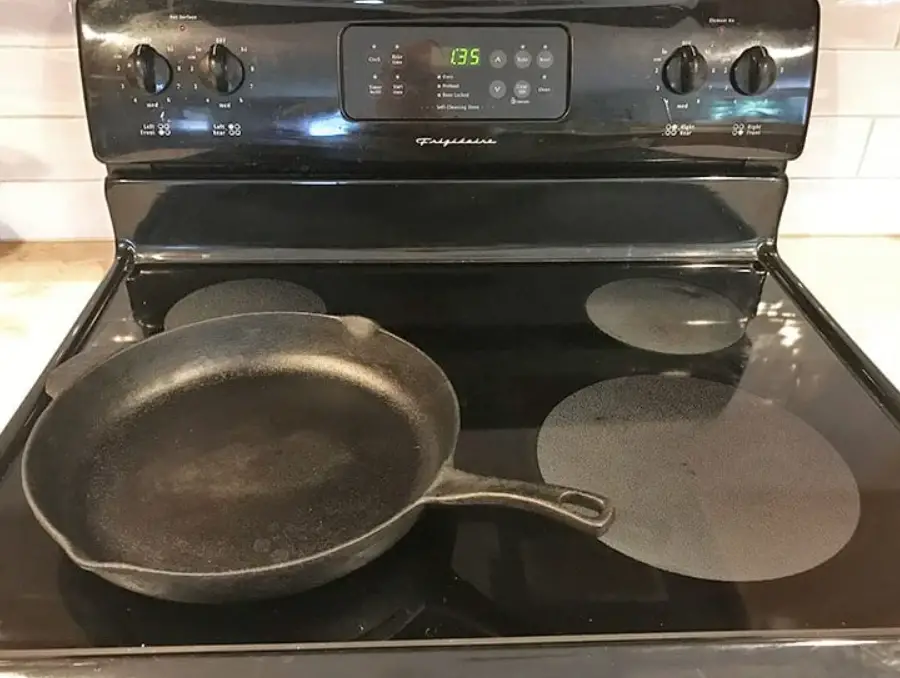
This simple practice prevents residue buildup and makes cleaning a breeze. With care and the right precautions, you can savor the convenience of your glass top stove and cook with cast iron for many years to come. [1]
How Can Cast Iron Damage Glass Top Stove?
Did you know that using cast iron skillets on a glass top stove can lead to permanent damage? Due to their weight, cast iron cookware is likely to scratch or crack the stovetop surface, leaving stubborn marks that are hard to remove and fix. Furthermore, because of their heat retention ability, cast iron can cause the glass to overheat, potentially resulting in cracks or even shattering. Protect your stove and extend its life by avoiding the use of cast iron cookware on glass top stoves.
Use Ceramic Coated Cast Iron to protect glass top stove
Protect your glass top stove effortlessly with ceramic coated cast iron. These skillets and pots are equipped with a layer of ceramic glaze on the bottom, safeguarding your stove from damage or scratches caused by traditional cast iron cookware. Cooking with ceramic coated cast iron cookware has never been easier.
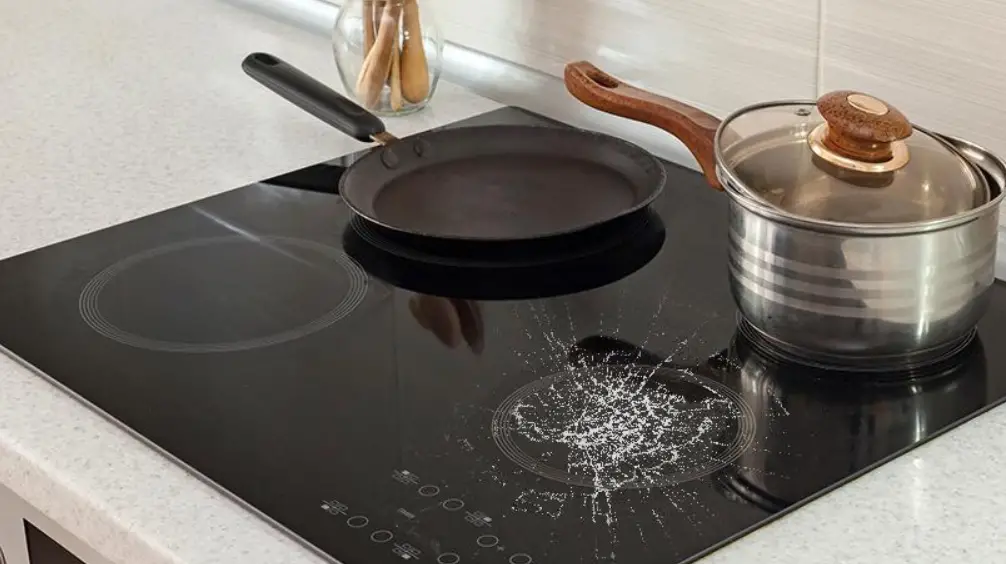
With its non-stick properties, you can say goodbye to the hassle of scraping food off the surface and hello to an effortless clean-up.
Plus, its scratch-free feature makes it perfect for glass top stoves. Retaining heat longer than other cookware materials, you can enjoy all the benefits of cast iron cooking without the worry of damaging your stovetop.
To prevent damaging your glass top stove with cast iron, you can try using a flat-bottomed griddle instead. This type of griddle provides a wider, even surface that will not scratch the stovetop. It also allows for more even heat distribution which means your food cooks faster and more evenly.
Maintaining your cast iron cookware is crucial when using it on a glass top stove. After each use, be sure to thoroughly clean and season it regularly to prevent rust buildup. Rust not only damages the cookware but also harms your glass stovetop. By following these straightforward tips, you can cook with cast iron on your glass top stove without damaging it. [2]
How to Clean Glass Cooktop
Maintaining the cleanliness and shine of your glass top stove may seem daunting, but fret not as there are easy tips you can follow to ensure your cooktop remains in top condition. Discover how to keep your stove looking sparkling clean with these simple tricks.
Protect your stovetop’s glass surface by avoiding the use of abrasive materials such as steel wool or wire brushes. Scratches and permanent damage can occur if these materials are used.
Another thing to keep in mind is to refrain from using abrasive chemicals on your glass cooktop. Many commercial cleaners are too abrasive and will dull the surface of your cooktop over time. For effective cleaning, opt for a gentle liquid dish soap with warm water instead.
Thirdly, it is important to avoid placing cast iron pots or pans directly onto the stovetop. Protect your glass cooktop from damage caused by cast iron pots or pans. Avoid warping the glass by using a heat diffuser between the cookware and the stovetop. Keep your cooktop in great condition and cook with confidence.
Protect your glass top stove from irreversible scratches by avoiding harsh scrubbing pads. Opt for a soft cloth and gentle soap to maintain its pristine appearance. Keep it clean and shiny without the risk of permanent damage.
What Pans Should Not Be Used On A Glass Top Stove?
Protecting your glass top stove is essential, but not all pans are suitable for it. Cast iron cookware, although popular for cooking, is not recommended for use on the surface since its heavy weight and rough bottom can damage and scratch the glass. To prevent any harm to your stove, it is wise to avoid using cast iron cookware altogether if you own a glass top stove.
Protecting your stove’s glass surface when using cast iron is crucial. Here are some tips to reduce the risk of damage. Consider investing in hot plates or heat diffusers to distribute heat more evenly. This will also protect the glass from direct contact with the pan. Moreover, using wooden utensils when stirring or flipping food in cast iron pans can prevent scratching. Keep your stove looking new for longer with these simple measures.
Maintaining a clean and polished surface on your glass top stove is crucial to keeping it looking brand new and preventing damage from various cookware, including cast iron. Make sure to follow the manufacturer’s cleaning instructions for optimal care. [3]
What Can I Put On My Glass Top Stove To Protect It?
You can use different materials to protect your glass-top stove from cast iron. One of the most popular and effective solutions is to place a protective pad, such as a silicone or rubber mat, over the surface. This will help absorb any scratching that may occur and offer some layer of protection against other objects rubbing against it.
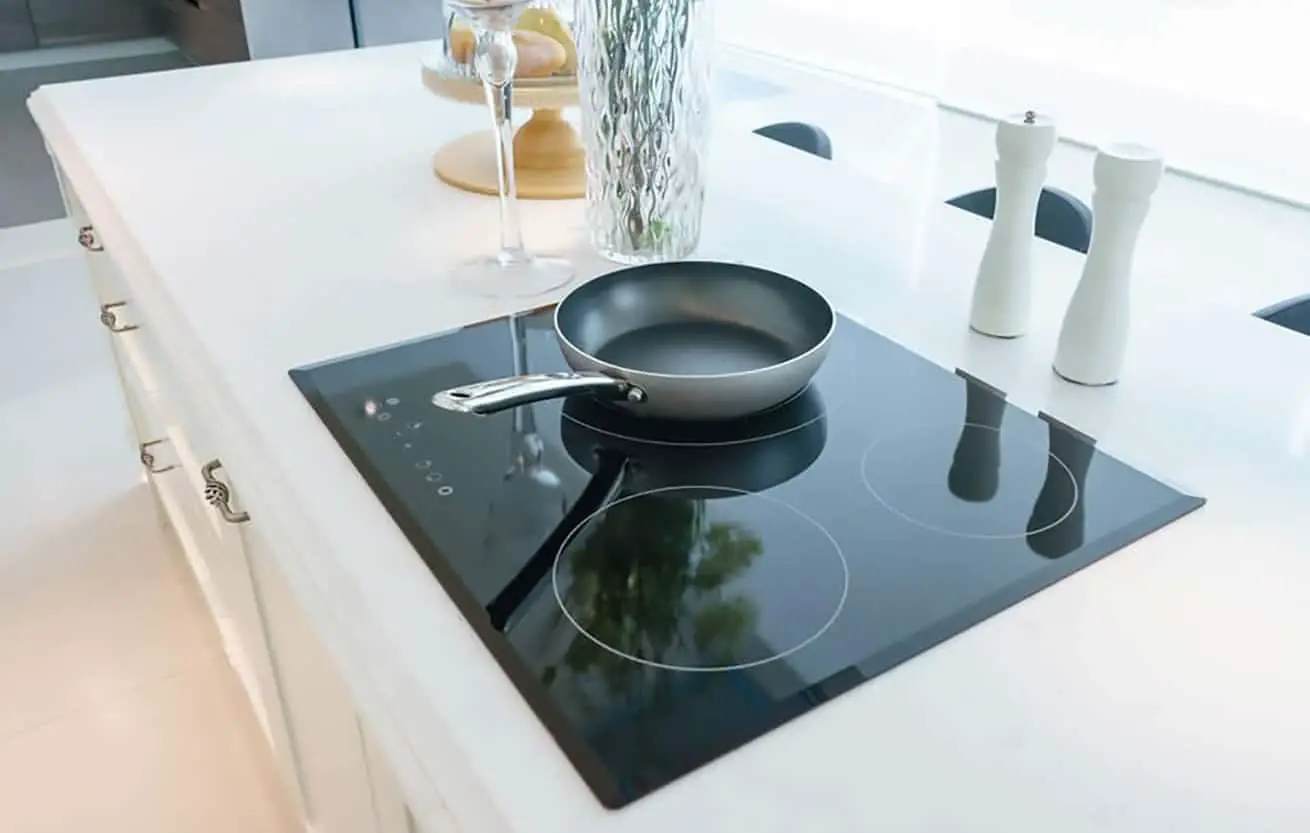
Additionally, you can place a layer of heat-resistant kitchen foil or parchment paper on the stovetop to create an additional barrier. This material is thin and won’t interfere with the stove’s performance while still providing added protection from scratches.
Keep your glass top stove looking new by using cast iron cookware correctly. Rather than sliding it, lift the pan to prevent unwanted grooves and scratches on the surface. Additionally, use hot pads when moving pans to ensure your stove stays protected from heat damage.
Learn the importance of regular cleaning for your glass top stove. By using a gentle cleaner and a soft cloth or sponge, you can easily remove dirt, grease, and food particles and maintain its appearance. This simple step will prevent scratches from becoming more prominent and keep your stove looking brand new.
Cleaning and Maintenance Tips to Protect Your Glass Top Stove
Cooking with a cast iron skillet on a glass top stove is appealing for its consistent and dependable heat, but it requires careful maintenance. If not handled properly, the weight of the skillet can leave scratches on the delicate glass surface or even cause it to break. To prevent damage to your glass top stove caused by the weight and heat of a cast iron skillet, consider following these tips:
- It is recommended to place a protective layer between the glass top and cast iron before commencing cooking. Use a flat, non-textured pot holder or ceramic trivet to provide extra cushioning and prevent scratching.
- Let the pan cool down before placing it on the glass top. To reduce the risk of cracking or shattering the glass, it’s important to let the pan cool down even if you’re in a rush to start cooking and the heat exposure is intense.
- To avoid damaging your glass top stove, make sure to lift a hot cast iron skillet off the stove and place it down gently, rather than sliding it. Sliding can result in scratches and cause damage.
- To avoid overheating and potentially breaking the glass top, make sure to promptly clean up any spills, no matter how small.
- To avoid cracking or shattering the glass, use a cast iron skillet that fits the surface of your stovetop appropriately. [4]
Protecting Glass Top Stove from Scratches
Attention all glass top stove owners! To keep your stove looking its best, it’s essential to prevent scratches and abrasion damage. Fear not, we have a solution – the trusty cast iron skillet. Although on the heavy side, these skillets offer an even heating surface that can save you from burnt food disasters. Just remember to handle it with care to avoid any unwanted damage.
To protect your glass top stove, always place a pot holder or trivet under your cast iron skillet when using it. This will provide an added layer of protection between the hot pan and glass surface.
Please refrain from sliding the skillet on the cooktop to prevent any potential scratches or damage.
Can You Repair Scratches On A Glass Top Stove?
It is possible to repair scratches on a glass top stove. The repair process varies depending on the severity of the damage and what material caused it. For minor scratches caused by utensils or metal objects, rubbing alcohol and a clean cloth can help to buff out small imperfections.
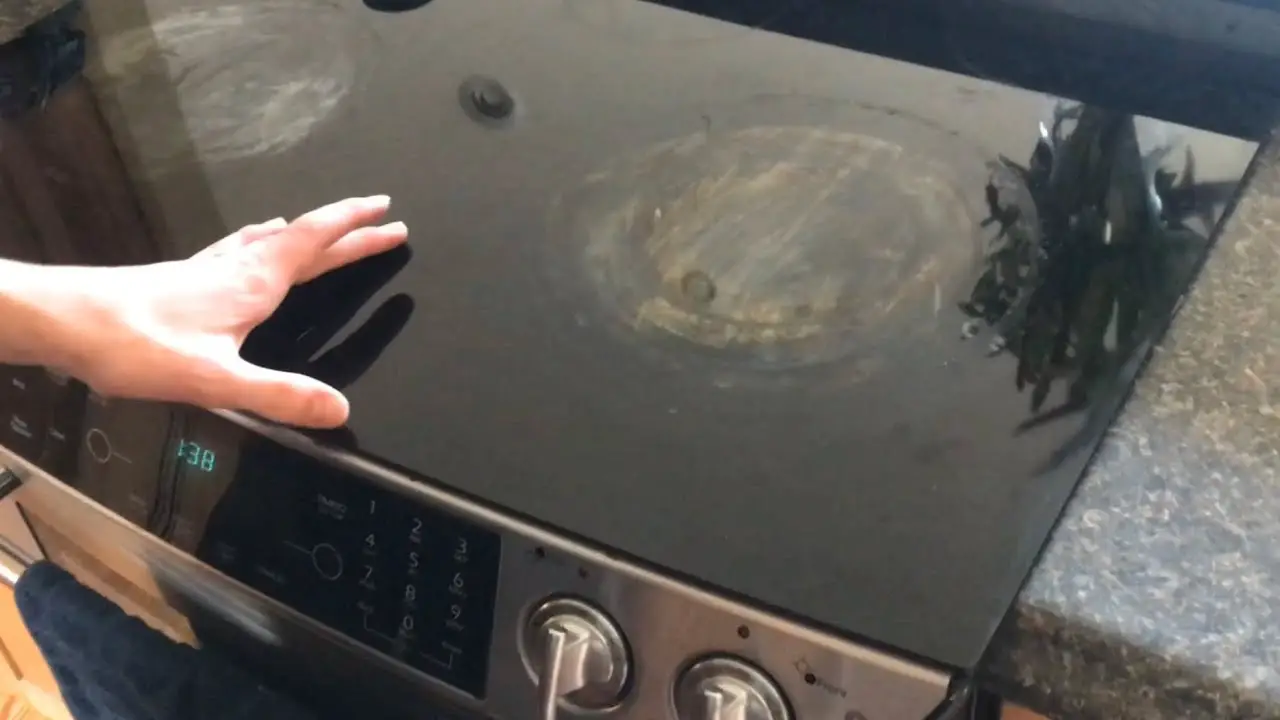
A glass stove top repair kit can be used for deep scratches, such as those caused by cast iron. The kits typically have specialized fillers that match the color of your stove top and can fill in any divots or scratches caused by cast iron cookware.
The filler is applied using a tool included in the repair kit. Once it has dried, it can be sanded smooth and then polished to a glossy finish. [5]
FAQ
Will a cast iron skillet damage a glass-top stove?
Cast iron can damage a glass-top stove if not handled carefully. Due to its weight and texture, sliding or dropping cast iron can cause scratches or even cracks. To avoid any damage, always handle it with care and refrain from sliding it across the surface. Furthermore, be sure to use a hot pad or trivet when placing a cast iron skillet on the stove. These precautions will help keep your glass-top stove in excellent condition. Also, make sure to use proper cleaners and avoid placing too much weight on the surface.
How do I protect my glass-top stove?
Upgrade your kitchen with a sleek glass-top stove, but don’t forget to maintain it properly to keep it looking good and working well. One common problem to avoid is damaging the stove by using heavy cookware like cast iron pots and pans. Take simple preventive measures to ensure your glass-top stove stays in top condition. To protect your valuable appliance, there are a few steps you can take.
To prevent any harm, make sure to use cookware that is specifically made for glass-top stoves. Worth noting, the weight of cast iron pans and skillets can cause a glass stovetop to crack.
How do I stop my glass cooktop from scratching?
Maintaining a pristine glass cooktop is essential for avoiding costly repairs, and preventing scratches is a crucial step in this process. Fortunately, you can easily safeguard your cooktop by using cast iron pans and skillets specifically made for glass cooktops. These specialized cookware products are carefully designed to prevent any damage to your cooktop, ensuring that your stove top stays in top shape while you prepare your favorite meals. Take care not to place metal utensils on your glass stove top to avoid scratches caused by dropping or dragging.
In the event of accidental scratching, you have a few options for remedy. Consider a glass top stove restoration kit or try using a non-abrasive cleaner such as baking soda and water or vinegar and water to gently buff out the scratches.
Protect your glass cooktop by avoiding abrasive materials that can cause damage.
By practicing regular cleaning and maintenance, you can enjoy a pristine and long-lasting stove top for years to come.
What should you not put on a glass-top stove?
Keep your glass-top stove in top condition by avoiding cast iron, ceramic, and porcelain cookware.
Since these materials can cause scrapes, scratches, and cracks in the glass, sticking to alternatives like stainless steel or aluminum pots and pans is key. And when it comes to cleaning up, steer clear of sharp objects like knives or scissors that could damage the surface. Overall, taking these simple precautions will help extend the life of your glass-top stove.
What can damage a glass stove top?
Discover how to safeguard one of the most sought-after features of modern kitchens – glass stovetops. Learn how to avoid damaging them, particularly when dealing with the omnipresent dilemma of cast iron pans that can leave scratches and chips when exposed to the heat. Avoid scratches and damage to your glass stove top by steering clear of metal utensils and wire scrubbers.
Abrasive cleaners should also be avoided as they can cause harm to the surface. Follow proper maintenance and care instructions to keep your glass stove top looking new.
What pans should be used on a glass-top stove?
Learn how to properly use a glass-top stove by using pans that are specially made for them, such as cast iron, copper, aluminum, or stainless steel. Avoid scratching the surface by using pans with flat and smooth bottoms, and avoiding non-stick pans that can cause damage.
Additionally, steer clear of pans with sharp edges that have the potential to cause scratches. Keep your glass-top stove in pristine condition with these easy-to-follow guidelines. Also, ensuring proper pans are used will also make the cooking process much easier.
What is the scratch proof cooktop?
Cooktops that are scratch proof are made of a special glass material that can resist scratches and damage, especially from heavy objects like cast iron. They are made using a special kind of tempered glass, which is much stronger and more resilient than traditional glass surfaces. This makes them ideal for use in busy kitchens where there is a greater chance of items being dropped or dragged across the cooktop. Although the cooktop is scratch-resistant, it’s crucial to take precautions to prevent any damage to the glass top stove.
Will baking soda scratch glass cooktop?
Baking soda is safe to use on glass cooktops as it is a gentle abrasive that won’t cause scratches.
However, it’s crucial to use it only occasionally and not as part of your regular stove maintenance routine to avoid any damage from excessive use.
To clean with baking soda, make a paste and gently scrub with a soft cleaning cloth, rinsing thoroughly with water afterwards. Keep in mind that baking soda may leave a residue on the surface of your stovetop, so wipe it away with a damp cloth after cleaning.
Do glass top stoves need special pans?
Attention all glass top stove owners! It’s important to use special pans for the best protection and to keep your stove looking like new. Avoid cast iron pans as they can crack or even shatter the delicate glass surface. Stick to pans designed specifically for glass top stoves for optimal performance. Prevent damage to your glass top stove by choosing a pan with a flat bottom and smooth edges.
Avoid sliding the pan across the surface as well, as this can cause unsightly scratches and damage. Play it safe by lifting the pan to move it to a different spot.
How long do glass top stoves last?
Learn how to extend the lifespan of your glass top stove with these simple tips. With proper care and maintenance, you can expect your stove to last anywhere from 10-15 years.
However, it’s important to take precautions to prevent wear and tear caused by cast iron cookware, which is heavier and more likely to scratch the surface.
Follow our advice to protect your stove and keep it looking like new!
However, if used properly and with the correct precautions in place it can help extend the life of your stove. Also, keep in mind that glass top stoves still require regular maintenance and cleaning to ensure optimal performance.
Will vinegar damage the glass stove top?
Using vinegar on a glass stove top will not cause any damage. Vinegar is a great natural cleaner for many surfaces and can be used to clean your glass stovetop. Make sure to only use white distilled vinegar and dilute it with water before cleaning. You should also avoid scrubbing too hard with abrasive materials as this may cause damage. To avoid damaging your glass stove top, clean it with vinegar using a gentle scrubbing motion with a soft cloth or sponge.
What are the disadvantages of a glass top electric stove?
Not all cookware may be compatible with a glass top electric stove, which is one of its main disadvantages. Over time, the surface of a glass top electric stove can be damaged by cast iron pans, which have a tendency to cause scratches and scuffs. Other materials such as non-stick cookware and aluminum pots and pans may become discolored or warped if used on a glass top electric stove.
Additionally, the heat from some cookware can cause brown spots to form on the surface of the stovetop.
Will steel wool scratch glass cooktop?
If steel wool is not used properly, it can cause scratches on a glass cooktop. If you choose to use steel wool on your stovetop, make sure to do so very gently and avoid excessive pressure or rubbing in any one spot. To reduce the possibility of scratches, it is recommended to utilize an ultra-fine steel wool pad. Make sure to use a high-quality cleaner that is specifically designed for glass cooktops after using steel wool. This will help to protect the surface from scratches and damage.
It is recommended to avoid using steel wool on visible parts of the stovetop. Only use it on areas where there is food or dirt buildup that will not be visible after cleaning the stovetop.
Useful Video: How To Protect Glass Top Stove From Cast Iron | Alice’s Kitchen
Conclusion
In order to prevent damage to your glass top stove by cast iron pans, it is crucial to use appropriate cookware and follow some basic instructions. Please select cookware with a flat bottom and made of non-eroding, non-scratching materials for your stove surface. To prevent chips and cracks, refrain from dragging heavy cast iron skillets over the glass top. Make sure you’re using the correct-sized pan on each burner, as an oversized one may also cause damage.
When cleaning your stovetop, it is recommended to use a mild cleanser along with a soft cloth so that you don’t end up scratching the glass surface. These tips will help you maximize the lifespan of your glass top stove.
References
- https://avantgardekitchen.com/how-to-protect-glass-top-stove-from-cast-iron/
- https://www.wikihow.life/Protect-a-Glass-Top-Stove-from-Cast-Iron
- https://www.whirlpool.com/blog/kitchen/can-you-put-cast-iron-on-glass-cooktop.html
- https://www.stonefryingpans.com/cast-iron-on-glass-top/
- https://boatbasincafe.com/how-to-protect-glass-top-stove-from-cast-iron-cookware/

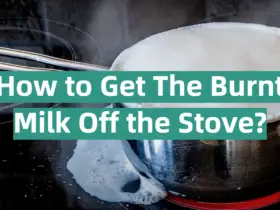
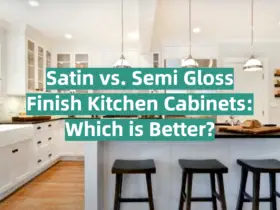
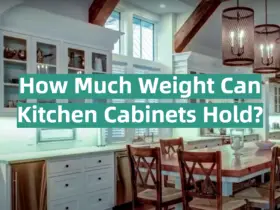
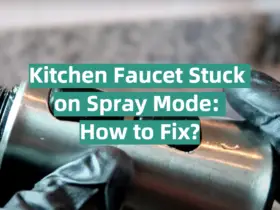
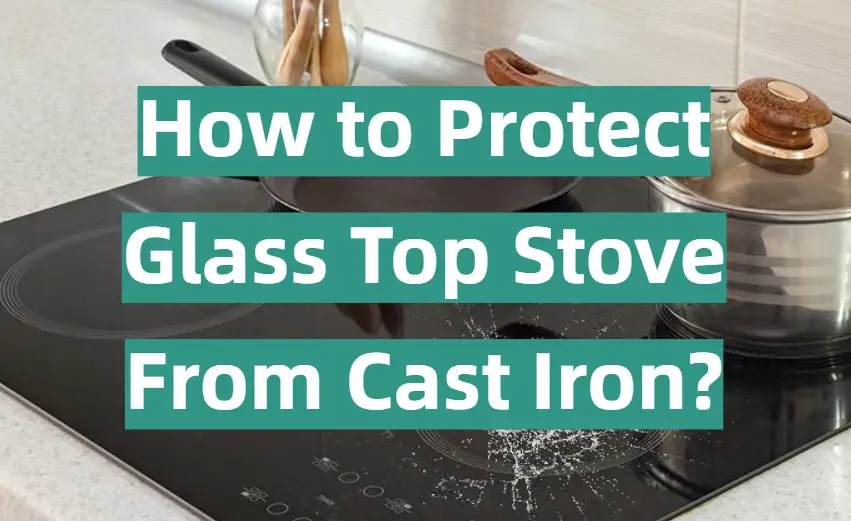
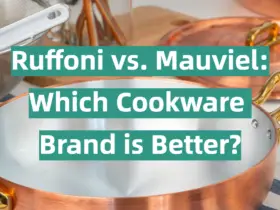
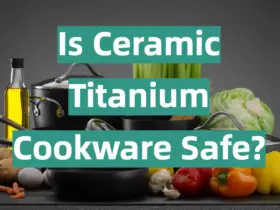
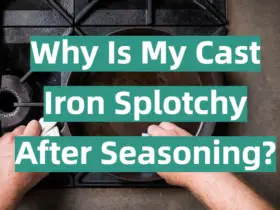
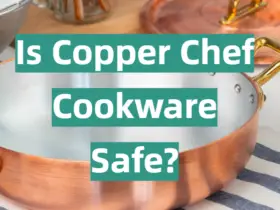
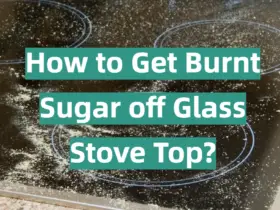
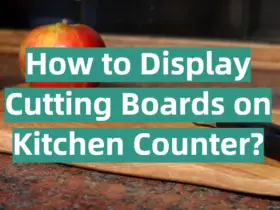

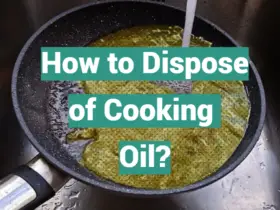
Leave a Reply